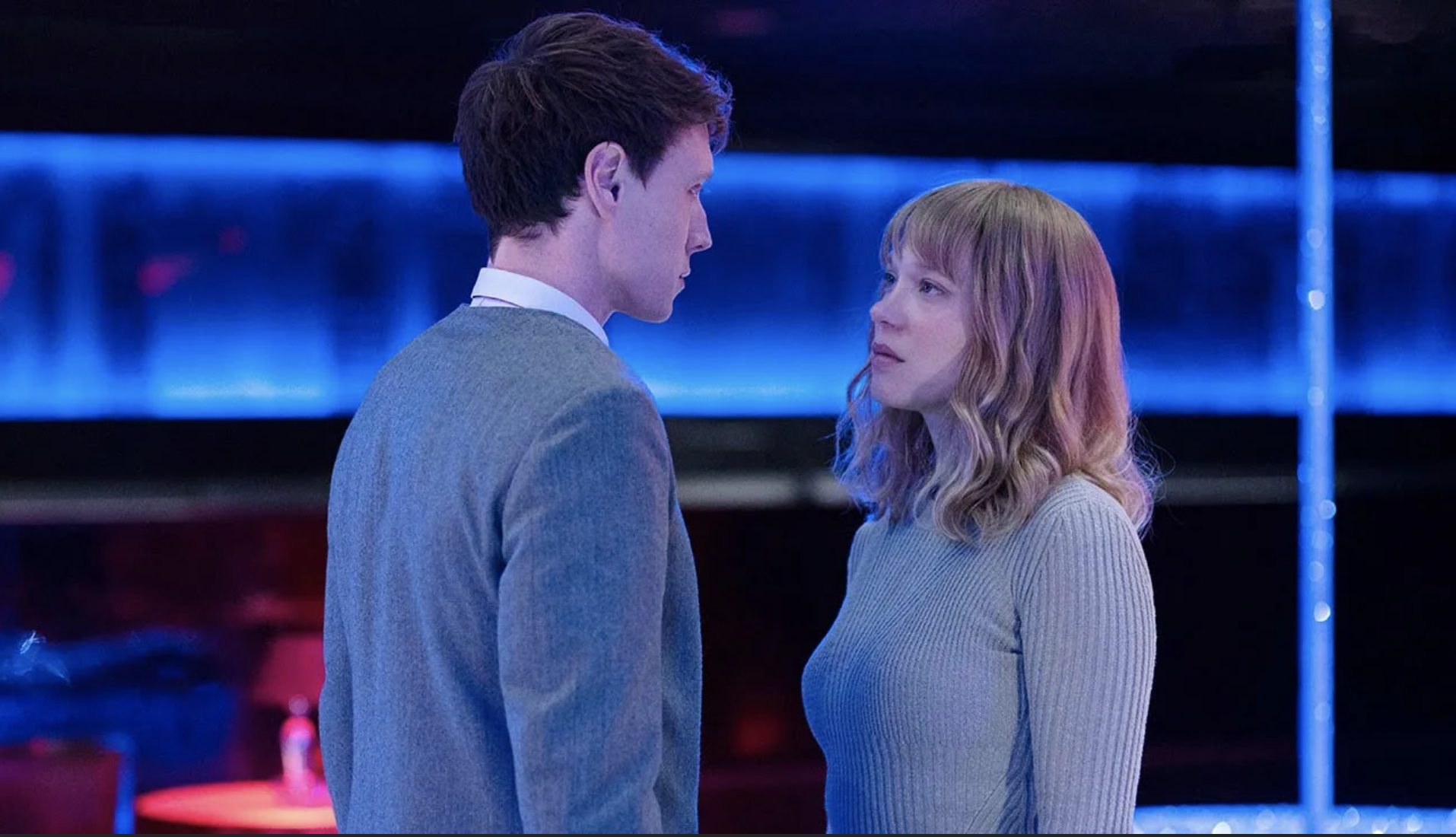Film Society x The Student: “The Beast,” Reviewed

In the opening scene of French auteur Bertrand Bonello’s latest film, “The Beast,” actress Lea Seydoux stands in the middle of a room lined with greenscreens. The voice of Bonello tells her that “the beast” is standing a little to her left but we, the audience, cannot see it. Seydoux picks up a knife, looks, and screams. What exactly is this beast? Is it a literal, physical monster? Or something deeper, more sinister? Is Seydoux playing a character filming a movie scene, or is she playing herself filming this very movie? The film has no interest in providing clear answers.
From here, we are taken to 1910. Lea Seydoux is now Gabrielle, a renowned and posh pianist, who meets the charming and refined Louis (George MacKay) at a party. While the pair share immediate, undeniable chemistry, their courtship is hampered by two things. For one, Gabrielle is married. But more pressingly, she is burdened by a deep fear that something horrible is going to happen to her — though she can’t say exactly what.
The cinematography is precise and refined, with carefully crafted compositions complimenting lavish and extravagant backdrops. Everything seems perfect — but something is wrong. Bonello juxtaposes Gabrielle’s immobilizing fears with the coolness and perfection of the movie’s craft to create a deeply unsettling feeling. Things cannot possibly be as they seem. There must be a beast, ready to pounce, but it remains unclear what it is.
Just as the audience has begun to settle into this narrative, the film shifts setting once again, jumping forward over a hundred years to 2044. Now, Gabrielle is a woman preparing to undergo a procedure to remove all her emotions in order to join the workforce. The world is run by AI, and unemployment runs rampant. Only those who can act perfectly logically can work. Bonello’s vision of the future is grim, and terrifyingly present. At one point, an AI voice refers to the “tragedies of 2025” implying that whatever event caused this dystopia is right around the corner.
Here, Bonello’s craft becomes stifled and restrictive. The wide fullscreen is replaced by a constricting 4:3 aspect ratio, and the form is dry and sterile. A pivotal interview with Gabrielle cuts between a left side angle, right side angle, and center medium in a robotic fashion. In order to rid herself of pesky feelings, Gabrielle must undergo a procedure that will purge her past lives from her consciousness. It becomes clear that this is the lens through which the 1910 story is being told. As she leaves the interview, she passes by Louis once again, but it is unclear who he is in this timeline.
The film spends a long time loosely intercutting these two stories, but as always, it refuses to allow you to lull yourself into anticipation, remaining wildly unpredictable and ineffable. About halfway through, a third story is suddenly introduced, taking the film on a sudden detour that is also its most effective segment. It is now Los Angeles, 2014, and Gabrielle is a down-on-her-luck model. Bonello’s Lynchian influences are most clearly on display here, with the hazy setting deeply echoing that of the 2001 film “Mulholland Drive.”
This segment also turns “The Beast” into a horror movie. Louis is no longer the charming bachelor of 1910, but a terrifying incel modeled after a real life murderer who killed six people and posted videos ranting about the evil of women who continually rejected him. After a mild earthquake causes him to briefly encounter Gabrielle, his target for revenge is found, and he sets off to kill her. While the beast of 1910 is a horrifying premonition, and the beast of 2044 is even more elusive, here it is all too real, all too familiar. The form devolves into loose digital mayhem. As the film becomes a sort of home invasion thriller, it morphs into one of the most terrifying theatrical releases in years.
“The Beast” appears, at first, to be a film about love through the ages. Really, it's more about fear. In 1910, Gabrielle is so hampered by her visions of doom that she refuses to let herself love or be loved, and it paralyzes her. In 2044, the fear of imperfection drives a society to eliminate the very things that make them human. In 2014, the fear becomes real and palpable. In the brief moment Gabrielle and Louis meet in this timeline, Gabrielle, completely unaware of who he is, begs him to come home with her so she won’t be alone. Louis, terrified of rejection, turns her down repeatedly. The two are deeply connected to each other in an almost cosmic sense, fated for connection in every lifetime. But in every lifetime, their fears cripple them. Falling in love is a terrifying thing, and “The Beast” posits that as much as we all may long for it, we will also do everything in our power to run away from it.
With this film, Bonello has crafted a beautiful and deeply ambitious masterpiece. Some may describe it as a mess, but it is precisely its messy nature that makes it so powerful. Cutting between three (or four, counting the inexplicable introduction) timelines and filling itself with Lynchian puzzle boxes and recurring motifs, “The Beast” paints a sprawling portrait of the human condition and the destructive powers of our fears. It refuses to pigeonhole itself into easy categorization. It is confusing to be sure, but its revelatory and deeply impactful ending makes its ethos all too clear. While this boundary-defying, arthouse science fiction film is unlikely to pick up any mainstream awards or smash the box office, it is absolutely not to be missed. It is improbable that the 78-year-old David Lynch, the film’s clear influence, will make another movie, but with this film, Bonello has positioned himself as a more than worthy successor.